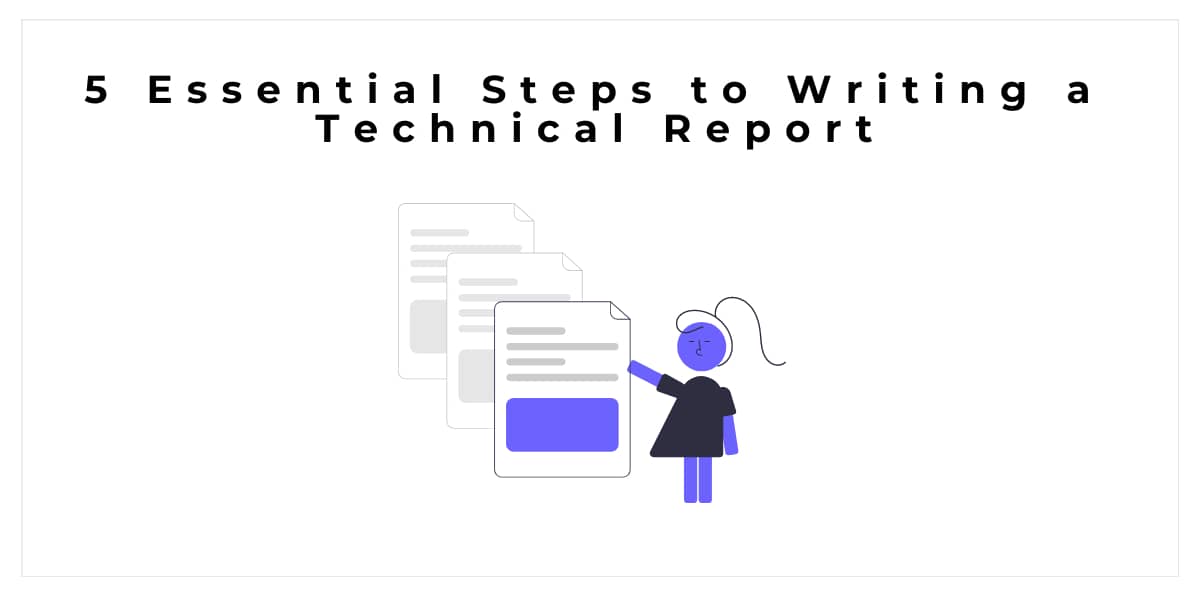For virtual learning, online science projects are the best way for students to learn science and math. Building a simple space project is a great way to get started. To prepare for such projects, students can take virtual lessons on building and designing. With the right guidance, students can easily complete their projects and communicate their findings effectively. These virtual projects also provide a great opportunity for students to learn in a fun and engaging way while staying safe at home. So, if you're looking for a simple and effective way to learn science and math, consider trying some virtual building projects today!
Step 1: Identify the Purpose and Audience
The first step in writing a technical report is identifying the purpose and audience. The report's purpose will help you determine what information to include and how to structure the report. The report's audience will help you determine how to present the information and what level of technical detail to include.
For example, if you are writing a technical report on a physics project for an elementary school class, the report may be to explain the project to the teacher and classmates. The audience may be other students who are not familiar with the project.
To identify the purpose and audience of your technical report, start by asking yourself the following questions:
- What is the purpose of the report? Is it to inform, persuade, or recommend?
- Who is the intended audience? Is it a teacher, classmates, or a wider audience?
- What level of technical detail is required? Is the report for an elementary school class or a college-level course?
By answering these questions, you can clarify the purpose and audience of your report and create a focused and effective document.
Step 2: Gather and Analyze the Information
The second step in writing a technical report is to gather and analyze information. This step is important because it ensures the report is accurate and credible. Gathering information from reliable sources will help you avoid errors and inconsistencies in your report. Analyzing the information will help you determine what is relevant and how it should be presented in the report.
To gather and analyze information for your technical report, follow these steps:
- Identify your sources. Look for reputable sources such as scientific journals, textbooks, and government websites.
- Collect your data. Record and organize your data in a spreadsheet or other tool.
- Analyze your data. Determine what is relevant and what can be left out of the report.
- Use graphics. Use tables, charts, and graphs to present the data in an easy-to-understand format.
By following these steps, you can ensure that your technical report is accurate, credible, and easy to understand.
Step 3: Organize and Outline the Report
The third step in writing a technical report is to organize and outline the report. This step is important because it ensures the report is structured logically and coherently. Organizing the report into sections and subsections will make it easier for the reader to follow and understand.
To organize and outline your technical report, follow these steps:
- Create an outline. Create an outline of the report that includes the main sections and subsections.
- Group similar information. Group similar information together under each section or subsection.
- Use headings and subheadings. Use headings and subheadings to make the report easy to navigate.
- Use bullet points. Use bullet points to break up long paragraphs and make the report more readable.
By following these steps, you can create a well-organized technical report that is easy to understand.
Step 4: Write the Report
Once you have gathered and analyzed all the necessary information, it's time to start writing your technical report. This is where you will combine all the research and data you have collected and present it clearly and concisely.
To begin, start with the introduction. In this section, you should provide some background information on the topic and clearly state the purpose and objectives of your report. Next, move on to the body of the report, where you will present your findings and analysis in detail. Use clear and concise language, and break up large blocks of text with headings and subheadings for easier reading.
Finally, end with a conclusion that summarizes your findings and provides recommendations or suggestions for future research or action.
Step 5: Review and Revise the Report
After you have written your technical report, reviewing and revising it carefully is important. This step ensures that your report is clear, concise, and error-free, making it easier for your audience to understand and follow.
Reviewing and revising your report ensures that it is accurate, well-organized, and easy to read. It also allows you to catch any errors or inconsistencies that may have been missed during the writing process. By taking the time to review and revise your report, you can improve the quality of your work and increase the chances of it being well-received by your audience.
To begin, read through your report carefully and look for any errors in grammar, spelling, or punctuation. Next, ensure that your report is well-organized and easy to follow by checking that your ideas flow logically and that you have used headings and subheadings to break up large blocks of text.
Finally, consider having someone else review your report to get a fresh perspective and catch any errors or inconsistencies you may have missed. This could be a classmate, friend, or even a tutor from CW assignments. CW assignments can do your STEM projects and activities, including technical report writing. Their online lessons and simple math and science-building prep can help you produce the best virtual projects, even in space!
Following these five steps and reviewing your work carefully, you can write a successful technical report that effectively communicates your research and analysis to your intended audience.








